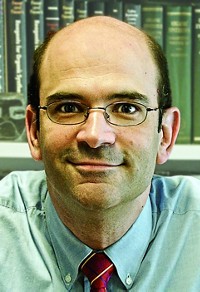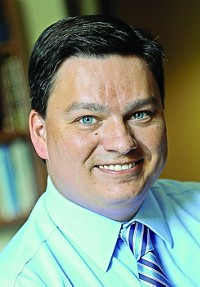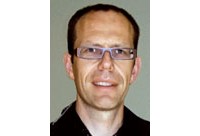Advertisement
Grab your lab coat. Let's get started
Welcome!
Welcome!
Create an account below to get 6 C&EN articles per month, receive newsletters and more - all free.
It seems this is your first time logging in online. Please enter the following information to continue.
As an ACS member you automatically get access to this site. All we need is few more details to create your reading experience.
Not you? Sign in with a different account.
Not you? Sign in with a different account.
ERROR 1
ERROR 1
ERROR 2
ERROR 2
ERROR 2
ERROR 2
ERROR 2
Password and Confirm password must match.
If you have an ACS member number, please enter it here so we can link this account to your membership. (optional)
ERROR 2
ACS values your privacy. By submitting your information, you are gaining access to C&EN and subscribing to our weekly newsletter. We use the information you provide to make your reading experience better, and we will never sell your data to third party members.
People
Ralph F. Hirschmann Award In Peptide Chemistry
by Linda Wang
March 10, 2014
| A version of this story appeared in
Volume 92, Issue 10

Sponsored by Merck Research Laboratories
“Mechanism leads to method, and method leads to strategy. That’s the holy grail,” says Samuel J. Danishefsky, a professor of chemistry at Columbia University and Kettering Chair and director of the Laboratory for Bioorganic Chemistry at Sloan-Kettering Institute for Cancer Research.
It’s this guiding principle that has led Danishefsky to make such important discoveries as the synthesis of anticancer vaccines and the total synthesis of many small natural products, which he refers to as SNPs. His latest achievement is the synthesis of homogeneous versions of erythropoietin (Science 2013, DOI: 10.1126/science.1245095).
“Sam has made an enormous impact on the glycopeptide field, from the synthesis of both carbohydrates and peptides to their covalent connection,” says Julius Rebek Jr., a professor of chemistry and director of the Skaggs Institute for Chemical Biology at Scripps Research Institute, La Jolla, Calif.
“His approach is characterized by high architectural originality and a willingness to assume risks,” says colleague Madeleine M. Joullié, a professor of chemistry at the University of Pennsylvania, who has followed Danishefsky’s research over the years. “His program, from chemical design, through a complex series of steps, culminating in promising clinical trials, is a most remarkable accomplishment.”
Danishefsky’s discoveries are diverse because he isn’t content to focus on just one area of research. “I shift to what I think are the most important and timely problems that I can think of,” he says. “But the basics are still the same: mechanisms, methods, strategy.”
Yet he’s highly selective in what he chooses to focus on. “It’s better to work on an A problem with a B solution than to work on a B problem with an A solution,” he says, noting that he always tries to pick out challenging problems to solve.
Danishefsky is the youngest of four children, including two brothers and a sister. One of his older brothers, a biochemist, was the first in the family to go into the sciences, and this helped spark Danishefsky’s own interest in the field.
Danishefsky entered college as a premed student before deciding to focus on chemistry. He earned a B.S. in chemistry from Yeshiva University in 1956 and went on to receive a Ph.D. in organic chemistry under the guidance of Peter Yates at Harvard University in 1962. He completed a postdoc in the lab of Gilbert Stork at Columbia in 1963.
The following year, Danishefsky began his academic career as an assistant professor at the University of Pittsburgh and by 1971 had earned the title of professor. He joined the faculty at Yale University in 1979 and moved to Sloan-Kettering Institute for Cancer Research in 1991. In 1993, Danishefsky took up a joint appointment at Columbia, where he is now Centennial Professor of Chemistry. He is cofounder of the Laboratory for Bioorganic Chemistry.
In addition to his love of chemistry, Danishefsky found another kind of love in the lab as well. He met his wife, Sarah, while he was a postdoc in Stork’s lab at Columbia and she was a graduate student. Today, Sarah runs his lab, and they have two children, a son and a daughter.
Danishefsky will present the award address before the Division of Organic Chemistry





Join the conversation
Contact the reporter
Submit a Letter to the Editor for publication
Engage with us on Twitter